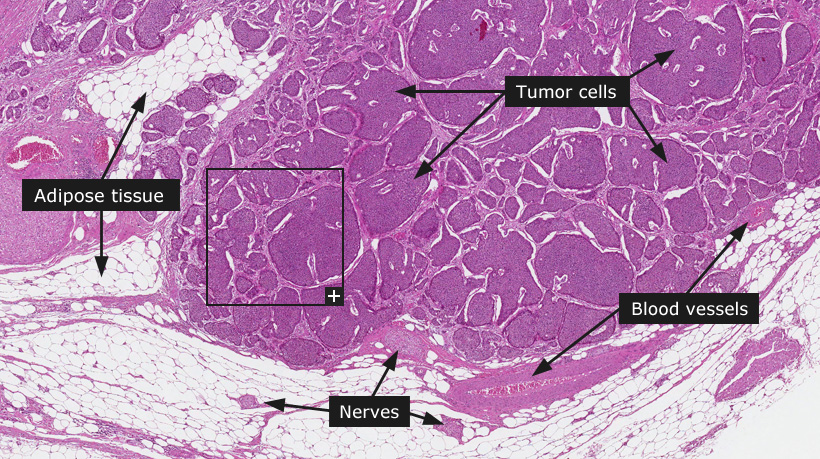Carcinoid
Male, 42 years, mid-gut carcinoid 
Carcinoid
Carcinoids comprise a group of neuroendocrine tumors derived from various tissues and organs. A common feature of these tumors is the existence of neuroendocrine secretory vesicles within the tumor cells. Neuroendocrine tumors form a spectrum ranging from well-differentiated neuroendocrine neoplasms, traditionally known as carcinoids, to poorly differentiated tumors with signs of neuroendocrine differentiation, such as small cell carcinomas. Carcinoids show variable expression of different endocrine markers and clinical symptoms vary dependent on the levels and composition of secreted proteins (hormones). Several carcinoids are endocrinologically silent. Furthermore, carcinoids differ with respect to malignancy grade, which determines the rate of growth and propensity to form metastases.
Carcinoids are common in the lung and approximately 5% of all primary lung tumors are carcinoids. The second most common location for carcinoids is the gastrointestinal tract. Carcinoids growing in the gut are sub-classified according to anatomic location into fore-gut, mid-gut and hind-gut carcinoids, all displaying differences in secreted proteins, symptoms and aggressiveness.
Microscopically, classical carcinoids are well-differentiated neuroendocrine tumors that are characterized by the formation of well-defined nests of tumor cells separated by thin fibrovascular septa and populations of tumor cells with a homogeneous appearance. The tumor cells are relatively small and round with central nucleoli and abundant lightly eosinophilic and granular cytoplasm. Mitotic figures are often absent or rare. Necrosis and hemorrhage is not a feature of carcinoids. Within the spectra of carcinoids there are also moderately differentiated tumors, often named atypical carcinoids. These tumors have a higher degree of cellular atypia and mitoses. Clinically atypical carcinoids show a greater tendency for aggressive growth and metastatic spread.
Immunohistochemistry has played an important role to define carcinoids and commonly used antibodies include anti-chromogranin A (CHGA) to determine neuroendocrine differentiation and various antibodies towards the different hormones and peptides that are produced and secreted by the tumor cells.
|